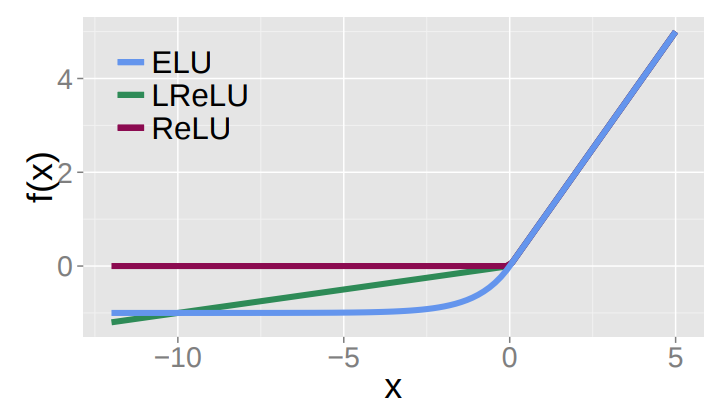I am using encoder-decoder model to predict binary images from grayscale images. Here is the model
inputs = Input(shape=(height, width, 1))
conv1 = Conv2D(4, 3, activation = 'relu', padding = 'same', kernel_initializer = 'he_normal')(inputs)
conv1 = Conv2D(4, 3, activation = 'relu', padding = 'same', kernel_initializer = 'he_normal')(conv1)
pool1 = MaxPooling2D(pool_size=(2, 2))(conv1)
conv2 = Conv2D(8, 3, activation = 'relu', padding = 'same', kernel_initializer = 'he_normal')(pool1)
conv2 = Conv2D(8, 3, activation = 'relu', padding = 'same', kernel_initializer = 'he_normal')(conv2)
drop2 = Dropout(0.2)(conv2)
pool2 = MaxPooling2D(pool_size=(2, 2))(drop2)
conv4 = Conv2D(16, 3, activation = 'relu', padding = 'same', kernel_initializer = 'he_normal')(pool2)
conv4 = Conv2D(16, 3, activation = 'relu', padding = 'same', kernel_initializer = 'he_normal')(conv4)
drop4 = Dropout(0.2)(conv4)
pool4 = MaxPooling2D(pool_size=(2, 2))(drop4)
conv5 = Conv2D(32, 3, activation = 'relu', padding = 'same', kernel_initializer = 'he_normal')(pool4)
conv5 = Conv2D(32, 3, activation = 'relu', padding = 'same', kernel_initializer = 'he_normal')(conv5)
drop5 = Dropout(0.2)(conv5)
up6 = Conv2D(16, 2, activation = 'relu', padding = 'same', kernel_initializer = 'he_normal')(UpSampling2D(size = (2,2))(drop5))
merge6 = concatenate([drop4,up6], axis = 3)
conv6 = Conv2D(16, 3, activation = 'relu', padding = 'same', kernel_initializer = 'he_normal')(merge6)
conv6 = Conv2D(16, 3, activation = 'relu', padding = 'same', kernel_initializer = 'he_normal')(conv6)
up7 = Conv2D(8, 2, activation = 'relu', padding = 'same', kernel_initializer = 'he_normal')(UpSampling2D(size = (2,2))(conv6))
merge7 = concatenate([drop2,up7], axis = 3)
conv7 = Conv2D(8, 3, activation = 'relu', padding = 'same', kernel_initializer = 'he_normal')(merge7)
conv7 = Conv2D(8, 3, activation = 'relu', padding = 'same', kernel_initializer = 'he_normal')(conv7)
up9 = Conv2D(4, 2, activation = 'relu', padding = 'same', kernel_initializer = 'he_normal')(UpSampling2D(size = (2,2))(conv7))
merge9 = concatenate([conv1,up9], axis = 3)
conv9 = Conv2D(4, 3, activation = 'relu', padding = 'same', kernel_initializer = 'he_normal')(merge9)
conv9 = Conv2D(4, 3, activation = 'relu', padding = 'same', kernel_initializer = 'he_normal')(conv9)
conv9 = Conv2D(2, 3, activation = 'relu', padding = 'same', kernel_initializer = 'he_normal')(conv9)
conv10 = Conv2D(1, 1, activation = 'sigmoid')(conv9)
model = Model(inputs=inputs, outputs=conv10)
nadam = optimizers.Nadam(lr=1e-4, beta_1=0.9, beta_2=0.999, epsilon=None, schedule_decay=0.0004)
model.compile(loss='mean_squared_error', optimizer=nadam, metrics=['accuracy', norm_mse])
nb_epoch = 30
batch_size = 8
history = unet.fit(training, trainingLabel,
validation_data=(validation, validationLabel),
batch_size=batch_size, epochs=nb_epoch, shuffle="batch", callbacks=[checkpointer], verbose=1)
I also have training dataset size is: 6912, validation dataset size is: 1728 Each time I start training my encoder-decoder in the very beginning I get different training accuracy and normalized MSE. It significantly affects the testing each time. I understand that weights in the beginning are randomly chosen and so it will affect the performance on the first epoch. My concern is that the difference is too large. Here are some examples:
Epoch 1/30
6912/6912 [==============================] - 27s 4ms/step - loss: 0.0612 - acc: 0.9252 - normalized_mse: 0.3661 - val_loss: 0.0367 - val_acc: 0.9559 - val_normalized_mse: 0.2920
Another example:
Epoch 1/30
6912/6912 [==============================] - 28s 4ms/step - loss: 0.1251 - acc: 0.8982 - normalized_mse: 0.5686 - val_loss: 0.1077 - val_acc: 0.9564 - val_normalized_mse: 0.5302
The last one:
Epoch 1/30
6912/6912 [==============================] - 26s 4ms/step - loss: 0.1721 - acc: 0.9400 - normalized_mse: 0.6751 - val_loss: 0.1582 - val_acc: 0.9582 - val_normalized_mse: 0.6473
if I run my model for more than 30 epochs it starts overestimating. The size of the Input images is 256x256 each has quite a bit of features and it is grayscale - the output is binary image.
Can some one please help me to understand if I am doing something wrong? And how can I make my model more stable?
[SOLVED] For those who face the same problem just feed the kernel_initializer some random seed. Example kernel_initializer=he_normal(seed=seed_val). That will solve the issue.


